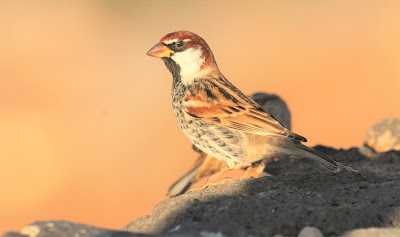Went
back down to Jandia Golf Course first thing and while the birds were pretty
similar to last time there’s a high concentration of stuff so it was good
birding; the Eastern Yellow Wagtail showed for longer, albeit distantly along with Meadow
Pipits, White Wagtails etc. while our only Atlantic Canaries of the trip (male and female) were also of note
along with 10 Trumpeter Finches and the usual Shrikes, Chiffchaffs, Chats etc.
We then had a look in Morro Jable Harbour
where the (underwhelming) highlight was a female COMMON
SCOTER deep in the harbour
(apparently only the second record for Fuerteventura!) along with many
Yellow-legged Gulls and Sandwich Terns while some massive Stingrays were drifting
around the harbour with big shoals of other fish. The Red Kite from a few days ago floated over the town (that’s a
first, a second and a third for Fuerteventura seen within a few hours!) before
we drove the long way out to Faro de Jandia (the SW point of the island), it
was very dry and rocky with not many birds with the exception of a first winter
Black-headed Gull by the Lighthouse!
Back in the town we bumped into a noisy, fun flock of Monk Parakeets while
Spectacled Warblers showed well in the narrow strip of saltmarsh.
Record shots of the Eastern Yellow Wagtail
Fuerteventura Stonechat
Southern Grey Shrike
Crippling views of the mega Common Scoter!
Berthelot's Pipit
Spectacled Warbler
Monk Parakeets
Popped back into Risco del Pasco where there were at least three colour ringed Kentish Plovers, not sure where they are from but probably Lanzarote.























































